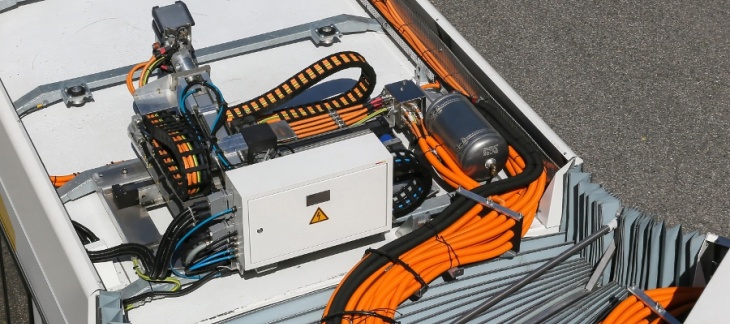
Innovation on the roof
The main technological innovation is the energy transfer system mounted on the roof of the buses. It comprises an articulated arm that automatically lifts up when the bus approaches a stop equipped with a flash feeding station and connects in just one second to a charging rail when the vehicle stops. This technology is known as flash-charging.
In barely 20 seconds, while the passengers are getting on and off the bus, this connection transfers enough energy to maintain a charging time of just four minutes at the bus terminals. By way of comparison, the amount of energy transferred is enough to recharge a dozen electric bikes in 20 seconds!
Thanks to this technology, TOSA buses don’t need to be constantly connected to electric cables that spoil the landscape.
In addition to the lack of overhead lines, the main advantage of TOSA technology is that it substantially reduces the size of the on-board batteries. This results in greater capacity (15 to 30% more seats) and less energy consumption (savings of around 10%) because the vehicle is lighter.
Clean energy that is consumed more efficiently
TOSA is all about using electric energy efficiently. The whole concept of the bus was designed with this in mind, and the resulting innovations are not simply restricted to flash-charging. For example, TOSA buses recover the energy produced when braking, decelerating and travelling downhill. This energy is stored and consumed directly within the vehicle. The electricity generated by roof-mounted battery units is used for the starting-up and driving phases instead of being returned to the overhead lines, as is the case with trolley bus lines.
TOSA is therefore a major innovation in network and energy management in that it integrates the aspects of energy storage and high-power energy transfer (smart-grid and smart-metering). IT technologies help to optimise electricity production and distribution according to consumption (in terms of quantity and location), which avoids electricity losses on the overhead lines.
Furthermore, the project promotes the use of renewable energies in the public transport sector. Services industriels de Genève (SIG), the electricity provider for Geneva’s public transport.